-
 Bitcoin
Bitcoin $118400
0.47% -
 Ethereum
Ethereum $3836
2.20% -
 XRP
XRP $3.157
2.98% -
 Tether USDt
Tether USDt $0.9999
-0.03% -
 BNB
BNB $801.5
1.31% -
 Solana
Solana $180.9
2.07% -
 USDC
USDC $0.9999
-0.02% -
 Dogecoin
Dogecoin $0.2225
2.50% -
 TRON
TRON $0.3285
-1.02% -
 Cardano
Cardano $0.7789
2.60% -
 Hyperliquid
Hyperliquid $43.60
2.39% -
 Sui
Sui $3.892
4.41% -
 Stellar
Stellar $0.4229
3.34% -
 Chainlink
Chainlink $18.01
3.98% -
 Hedera
Hedera $0.2745
6.77% -
 Bitcoin Cash
Bitcoin Cash $582.3
3.38% -
 Avalanche
Avalanche $23.77
1.04% -
 Ethena USDe
Ethena USDe $1.001
0.01% -
 Toncoin
Toncoin $3.493
3.59% -
 Litecoin
Litecoin $110.0
2.48% -
 UNUS SED LEO
UNUS SED LEO $8.936
-0.37% -
 Shiba Inu
Shiba Inu $0.00001304
2.49% -
 Uniswap
Uniswap $9.999
1.09% -
 Polkadot
Polkadot $3.897
3.26% -
 Monero
Monero $308.6
-0.83% -
 Dai
Dai $0.9999
-0.01% -
 Bitget Token
Bitget Token $4.504
-0.04% -
 Pepe
Pepe $0.00001154
2.95% -
 Cronos
Cronos $0.1471
3.06% -
 Ethena
Ethena $0.6691
19.53%
What does it mean when the KDJ fast line falls after trading sideways for three consecutive days above 80?
When the KDJ %K line stays above 80 for 3 days and then falls after sideways movement, it signals potential bearish reversal, especially if confirmed by volume and RSI.
Jul 30, 2025 at 10:49 am
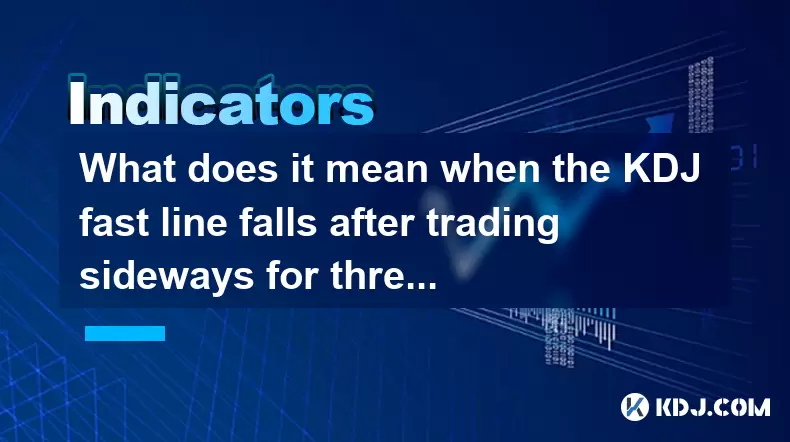
Understanding the KDJ Indicator in Cryptocurrency Trading
The KDJ indicator is a momentum oscillator widely used in cryptocurrency technical analysis to identify overbought and oversold conditions. It consists of three lines: the %K (fast line), %D (slow line), and %J (divergence line). The %K line reflects the current closing price relative to the price range over a specified period, typically 9 days. The %D line is a moving average of %K, smoothing out fluctuations, while the %J line represents the divergence between %K and %D. Traders monitor these lines to detect potential reversals or trend continuations in volatile crypto markets.
When the KDJ fast line (%K) remains above 80 for three consecutive days, it signals that the asset is in the overbought zone. This suggests strong bullish momentum and possible exhaustion of buying pressure. A sustained position above 80 indicates that prices have been near the top of their recent range, which may attract profit-taking by traders.
Significance of Three Consecutive Days Above 80
When the %K line stays above 80 for three days, it reflects persistent upward momentum. In cryptocurrency trading, where volatility is high, such a pattern often emerges during pump phases or FOMO (fear of missing out) rallies. However, extended time in the overbought region increases the likelihood of a correction. The market may be overheated, and short-term traders might start securing profits.
This prolonged overbought condition does not guarantee an immediate reversal. Strong trends in crypto assets, especially during bull runs, can remain overbought for extended periods. Nevertheless, the three-day threshold is often used as a psychological benchmark. It alerts traders to heightened risk and the potential for a pullback, especially if accompanied by decreasing volume or bearish candlestick patterns.
Interpreting the Fast Line’s Fall After Sideways Movement
A fall in the %K line after trading sideways above 80 suggests weakening bullish momentum. During the sideways phase, the fast line hovers near the upper boundary, indicating indecision or consolidation among market participants. When it begins to decline, it signals that selling pressure is starting to outweigh buying interest.
This downward movement of the %K line may cross below the %D line, forming a bearish crossover. Such a crossover is a classic sell signal in KDJ analysis. In the context of cryptocurrency, where price swings are rapid, this signal can precede sharp corrections, especially if it occurs at a key resistance level or after a significant price surge.
The fall of the fast line implies that recent closes are no longer near the high end of the trading range. This shift in price behavior can indicate that buyers are losing control, and bears may be stepping in. Traders often combine this signal with volume analysis or support/resistance levels to confirm the validity of the bearish shift.
Practical Steps to Respond to This KDJ Signal
- Monitor the exact crossover point between %K and %D. Use a 15-minute or hourly chart to pinpoint the timing of the downward cross.
- Check trading volume during the sideways phase and the subsequent drop. A decline in volume during the consolidation followed by rising volume on the %K fall strengthens the bearish signal.
- Identify key support levels on the price chart. If the fall in %K coincides with price approaching a known resistance-turned-support zone, the reversal may be more reliable.
- Cross-verify with RSI (Relative Strength Index). If RSI is also above 70 and starts declining, it reinforces the overbought exhaustion theory.
- Set stop-loss orders above the recent swing high if holding long positions. This minimizes risk if the reversal accelerates.
- Consider taking partial profits if already in a long position, especially if the asset has risen sharply in a short time.
- Avoid opening new long positions until the KDJ exits the overbought zone and shows signs of stabilization below 80.
Common Misinterpretations and How to Avoid Them
One common mistake is assuming that a falling %K line always means a downtrend is imminent. In strong bull markets, the KDJ can remain overbought for extended periods, and temporary dips in %K may be followed by renewed upward momentum. Traders who short based solely on this signal without confirmation may face losses during continuation rallies.
Another error is ignoring the timeframe. On lower timeframes like 5-minute charts, KDJ signals can be noisy and generate false signals due to market microstructure. It is advisable to analyze the daily or 4-hour chart for more reliable readings.
Additionally, some traders overlook market context. For example, during major news events or exchange listings, crypto prices can defy technical indicators. Always assess whether external catalysts could sustain the overbought condition despite the KDJ turning downward.
Integrating KDJ with Other Technical Tools
To enhance accuracy, combine KDJ signals with moving averages. If the price is above the 50-day or 200-day MA, the overall trend remains bullish, and a falling %K may only indicate a pullback, not a trend reversal.
Use Bollinger Bands to assess volatility. A squeeze followed by a breakout during the overbought phase may delay the reversal, even if %K starts falling.
MACD (Moving Average Convergence Divergence) can confirm momentum shifts. A bearish MACD crossover aligning with the %K downturn increases the probability of a downward move.
Chart patterns such as double tops or head and shoulders forming near the overbought zone add confluence. If the KDJ fast line falls while such a pattern completes, the bearish case strengthens.
Frequently Asked Questions
What is the ideal setting for the KDJ indicator in cryptocurrency trading?
The standard setting is 9,3,3 — 9 periods for %K, a 3-period moving average for %D, and %J calculated as 3 times %K minus 2 times %D. This setting balances sensitivity and reliability for most crypto assets. Adjusting to 14,3,3 may reduce noise in highly volatile tokens.
Can the KDJ signal fail in crypto markets?
Yes. Due to extreme volatility and manipulation risks like whale movements or exchange outages, KDJ can give false signals. Always use it alongside volume, order book data, and multi-timeframe analysis to filter out noise.
Should I exit my position immediately when the %K line falls from above 80?
Not necessarily. Wait for confirmation, such as a close below the %D line, a break of a short-term trendline, or increased selling volume. Premature exits may cause you to miss further upside in strong trends.
Does this signal work the same across all cryptocurrencies?
No. Major coins like Bitcoin and Ethereum tend to follow technical patterns more reliably due to higher liquidity. Low-cap altcoins may ignore KDJ signals due to low volume and pump-and-dump schemes. Adjust expectations based on the asset’s maturity and trading volume.
Disclaimer:info@kdj.com
The information provided is not trading advice. kdj.com does not assume any responsibility for any investments made based on the information provided in this article. Cryptocurrencies are highly volatile and it is highly recommended that you invest with caution after thorough research!
If you believe that the content used on this website infringes your copyright, please contact us immediately (info@kdj.com) and we will delete it promptly.
- Ozak AI: Can This Underdog Crypto Achieve a Bull Run to $1?
- 2025-07-31 22:30:12
- Coinbase Breach: Navigating Insider Risk and Bolstering Security
- 2025-07-31 23:11:55
- Bitcoin Rebounds, WeWake Presale Gains Traction: What's the Buzz?
- 2025-07-31 22:30:12
- Bitcoin, Altcoins, and Volume Watchlists: Decoding the Crypto Landscape
- 2025-07-31 23:11:55
- Tron, Fartcoin, and BlockchainFX: What's Trending (and What's Not) in the Crypto World
- 2025-07-31 21:32:19
- Bitcoin, Corporate Investments, and Sustainability: A New Era or Fleeting Fad?
- 2025-07-31 20:50:14
Related knowledge

How can you use the MACD histogram to determine trend strength?
Jul 31,2025 at 11:10pm
Understanding the MACD Histogram and Its ComponentsThe MACD (Moving Average Convergence Divergence) histogram is a visual representation of the differ...
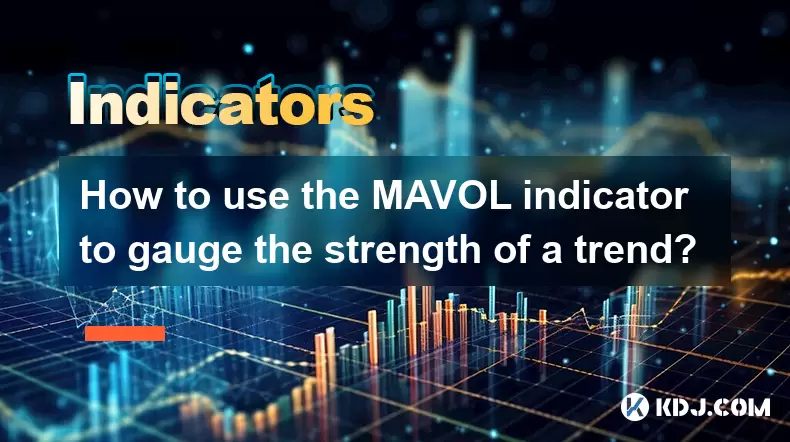
How to use the MAVOL indicator to gauge the strength of a trend?
Jul 31,2025 at 09:57pm
Understanding the MAVOL Indicator in Cryptocurrency TradingThe MAVOL indicator, short for Moving Average of Volume, is a technical analysis tool widel...
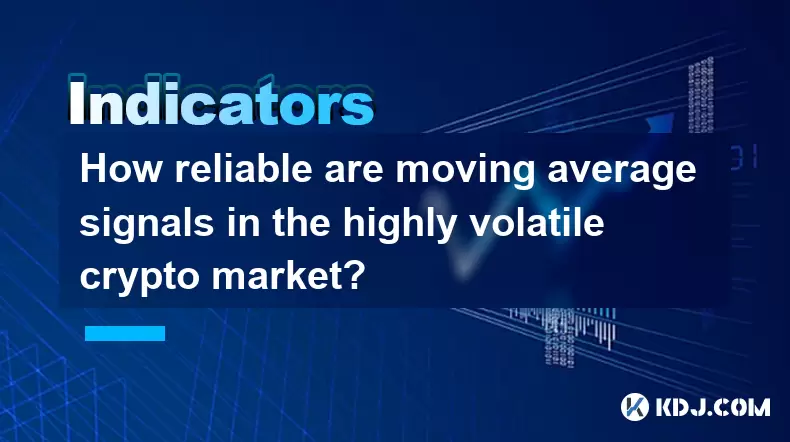
How reliable are moving average signals in the highly volatile crypto market?
Jul 31,2025 at 08:36pm
Understanding Moving Averages in Cryptocurrency TradingMoving averages (MAs) are among the most widely used technical indicators in the cryptocurrency...
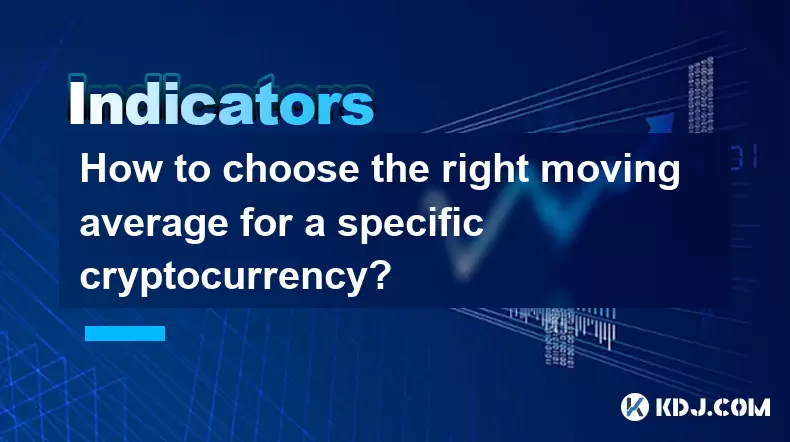
How to choose the right moving average for a specific cryptocurrency?
Jul 31,2025 at 10:29pm
Understanding the Role of Moving Averages in Cryptocurrency TradingMoving averages are foundational tools in technical analysis, widely used by crypto...
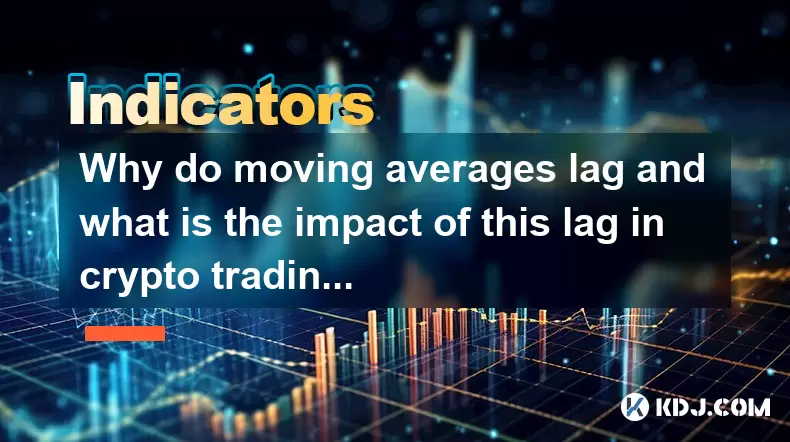
Why do moving averages lag and what is the impact of this lag in crypto trading?
Jul 31,2025 at 08:07pm
Understanding the Concept of Moving Averages in Crypto TradingMoving averages are among the most widely used technical indicators in cryptocurrency tr...
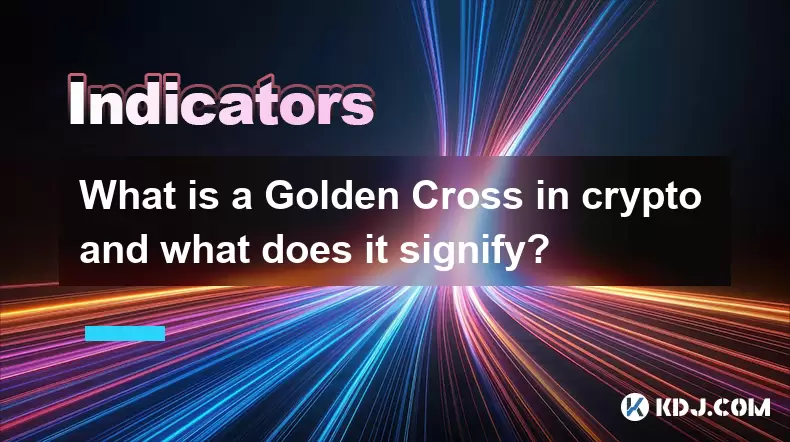
What is a Golden Cross in crypto and what does it signify?
Jul 31,2025 at 10:36pm
Understanding the Golden Cross in Cryptocurrency MarketsThe Golden Cross is a technical analysis pattern widely observed in cryptocurrency trading. It...

How can you use the MACD histogram to determine trend strength?
Jul 31,2025 at 11:10pm
Understanding the MACD Histogram and Its ComponentsThe MACD (Moving Average Convergence Divergence) histogram is a visual representation of the differ...

How to use the MAVOL indicator to gauge the strength of a trend?
Jul 31,2025 at 09:57pm
Understanding the MAVOL Indicator in Cryptocurrency TradingThe MAVOL indicator, short for Moving Average of Volume, is a technical analysis tool widel...

How reliable are moving average signals in the highly volatile crypto market?
Jul 31,2025 at 08:36pm
Understanding Moving Averages in Cryptocurrency TradingMoving averages (MAs) are among the most widely used technical indicators in the cryptocurrency...

How to choose the right moving average for a specific cryptocurrency?
Jul 31,2025 at 10:29pm
Understanding the Role of Moving Averages in Cryptocurrency TradingMoving averages are foundational tools in technical analysis, widely used by crypto...

Why do moving averages lag and what is the impact of this lag in crypto trading?
Jul 31,2025 at 08:07pm
Understanding the Concept of Moving Averages in Crypto TradingMoving averages are among the most widely used technical indicators in cryptocurrency tr...

What is a Golden Cross in crypto and what does it signify?
Jul 31,2025 at 10:36pm
Understanding the Golden Cross in Cryptocurrency MarketsThe Golden Cross is a technical analysis pattern widely observed in cryptocurrency trading. It...
See all articles

























































































